Chocolate’s dominance as the go-to flavour in sweet baked goods is being challenged thanks to skyrocketing cocoa prices and market challenges, resulting in a shortage of cocoa powder.
It’s a volatile combination of factors which has led to the current situation – the surge in prices driven by severe supply challenges in West Africa, an area responsible for the majority of the world’s cocoa output. Outbreaks of black pod disease in Ghana and Côte d’Ivoire, unfavourable weather, and deep-rooted structural issues, including chronic underinvestment in farms, have devastated cocoa yields. The resultant shortfall meant a 200% increase in prices over the past couple of years.
“Following the second big peak in cocoa prices last December, when prices hit an unprecedented £9,000 per tonne, they fell back to £6,000 in early April but have now started to creep back up again,” says Steve Calver, commercial director and cocoa markets expert for ingredients supplier Henley Bridge. “It’s still a volatile situation and we’ve seen an increase in recent weeks because cocoa beans have been rejected from the Ivory Coast due to inferior quality.”
Distributors such as Henley Bridge are “six months behind the curve” so prices are “still very high”, adds Calver, but progress is expected to be seen in Q3 and Q4. Going into 2026, prices will depend on the crop forecast for the main harvest in October.
With the situation somewhat unpredictable, keeping costs under control remains a point of focus. Swallowing them entirely isn’t an option for many businesses and while some of the additional costs can be passed onto consumers, they’re unlikely to want to bear the full burden of a difficult market.
“The impact on the bakery sector is already being felt – particularly where chocolate is a key ingredient,” states Claire Powell, technical baker at Bako.
She describes cocoa powder as an ingredient with “extremely inelastic demand”, particularly as it can’t easily be replaced without compromising on taste. In contrast, she notes, cocoa butter, which is used for texture and mouthfeel, can be partially substituted with palm or cocoa oil. This divergence has led to an increase in ‘chocolate-flavoured’ bakery products.
“As a result, the continued high price of cocoa powder may challenge chocolate’s dominance as the go-to indulgent ingredient in bakery,” Powell adds.
Henley Bridge’s Calver also points to “issues surrounding grinding and pressing” as another factor compounding the situation.
Replace or reduce?
Tactics for dealing with the ongoing issues vary but replacement or reduction of cocoa in some guise are the most prominent.
“Cocoa replacers aren’t just an option, but a must-have”
“Customers are still using chocolate in their baked goods, though sometimes using slightly less,” says Amy Guittard, chief marketing officer of Guittard Chocolate Company, noting that other customers are choosing to make their items a bit smaller. “We have also seen customers being really transparent about why prices are rising, why recipes might be changing ever so slightly, as a means of maintaining trust but also as a way to create transparency around real global and social issues that affect all of us. For so long, the cocoa and chocolate industry have been grabbling with these issues and it’s now becoming very real for consumers,” she adds.

The aforementioned recipe changes may involve simply cutting the amount of cocoa and chocolate products in recipes (such as chocolate chips in cookies, for example) or utilising a cocoa replacer, a type of ingredient which has grown in popularity in recent years.
“Cocoa replacers aren’t just an option now, but a must-have,” explains Bryn Williams, chief commercial officer at malted ingredients supplier Muntons who says the firm’s customers are using them to “help them combat cocoa price inflations and stabilise the cost of the end product”.
The variety of cocoa replacers and substitutes on the market is plentiful. Options range from Muntons’ MaltiChoc made from malt extract to Agrain’s Cocoa Replacement made from brewers’ spent grain containing malt as well as cocoa husks. Elsewhere, Henley Bridge has rolled out Prova Gourmet Natural Cocoa Flavouring, which it claims can help bakers shave 20% off their costs by reducing cocoa powder by 30% without compromising on flavour or texture.
There’s also the likes of ChoViva which promises a ‘chocolatey taste experience’ made from sunflower seeds, sustainable plant-based fats, sugar, and milk powder, as well as compound Chocuise – a cost-effective coating alternative from Dawn Foods available in white, milk, or dark.

“Cocoa prices may never return to where they were and as companies accept that the era of cheap cocoa is over, finding high quality and reliable replacements… for cocoa-based products is becoming essential,” Williams adds.
Reducing cocoa doesn’t have to mean turning to direct replacements or alternatives, embracing flavours beyond the comforting realm of chocolate can bring its own excitement.
“The current climate is encouraging innovation and recalibration in product development. We’re seeing a growing interest in hybrid and layered products – such as combining smaller amounts of chocolate with trending flavours like pistachio or using chocolate as a decorative element rather than a bulk ingredient,” says Claire Powell, technical baker at Bako. This, she says, allows bakers to retain the appeal of chocolate while “keeping costs in check”.
Thankfully, this aligns with current trends. Jacqui Passmore, marketing lead West EU & AMEAP at Dawn Foods, highlights how “consumers are looking for new twists on flavours they know, and they are keen to experiment with chocolate paired with fruit flavours or caramel, for example”. According to Passmore, this gives bakers not only the opportunity to keep a few core chocolate products in their range but also to “dial up the creativity” with fresher fruit-based fillings and chocolate alternatives.

Fresh and fruity
The fruit and nut industries aren’t without its own challenges though. “The availability and cost of the fruit used in fruit filling preparations can sometimes be challenging,” highlights Crispin Gell, head of customer partnerships at flavour firm I.T.S. “Availability is often weather dependent, so things such as drought, late frosts, storms/heavy rain close to crop time all play a part in supply and price difficulties.”
But unlike the turbulent cocoa market, which is seeing suppliers and manufacturers innovate at pace, these issues are pretty much in hand with the likes of purees, ready-to-use natural fruit fillings with a long shelf life, and flavours (among other options) ready and waiting in the wings.
Sustainability also presents a challenge in the market, believes Lisa Kerr, senior marketing manager at Puratos UK who notes “growing pressures to reduce carbon footprint, use more sustainable farming practices and improve transparency across the supply chain”. “Consumers understandably want to know where their fruit comes from – and the more local, the better,” she adds.
“Fruit fillings continue to be a cornerstone of sweet bakery innovation”
Puratos is in a good position to meet this demand having acquired Kent-based fruit grower and processor Fourayes in 2022. The firm’s farm and factory are surrounded by English Bramley apple orchards, with fellow Red Tractor suppliers of British-grown fruits in close proximity.

The demands don’t stop there when it comes to what consumers, and by extension bakers, want from fruit fillings, as Dawn Foods’ Passmore can attest to. “At the premium end of the market, bakers are looking for fruit fillings with a traditional appearance, whole fruit and freshly peeled apples, for example,” she explains, adding that high fruit content and named origin fruits such as Belgian Jonagold Apple, Red Cherry Montmorency, William Pear, and Pandi Dark Sour Cherry, for example, can help to add value to products.
By its very nature, fruit is seasonal and, even though longer life products exist, it offers bakers the perfect playground to mix up their products depending on the time of year.
“Fruit fillings continue to be a cornerstone of sweet bakery innovation,” believes Samantha Winsor, marketing manager at baked goods supplier Lantmännen Unibake UK, “with both traditional favourites and seasonal flavours shaping consumer preferences”.
The classics – such as apple, cherry, and strawberry – continue to drum up interest because they “evoke familiarity and comfort, whilst also offering versatility across formats, from pastries to traybakes”, she adds.
Lemon, meanwhile, is growing at pace. Dawn Foods points to analysis of top fruit flavours in European sweet bakery product launches last year, based on the Mintel database, which put lemon on top followed by raspberry, strawberry, apple, and apricot. Peach is also riding the nostalgia train as Puratos’ Kerr points to the likes of dessert-inspired flavours such as peach melba as well as “peach-tachio”, a combination of peach and pistachio which is bringing a “unique, refreshing taste” to cakes and pastries.

With each trend comes its own hurdle. The spike in interest in pistachios (partly driven by the demand for anything Dubai chocolate related) is already resulting in supply concerns for the nuts.
Thankfully, pistachio’s prominence in bakery isn’t anywhere near comparable to cocoa so hopefully there will be fewer headaches when dealing with supply chain issues. In the meantime, cocoa is likely to remain atop the agenda, particularly with prices expected to remain elevated through the rest of 2025 and into 2026.
“While it [chocolate] is unlikely to disappear from shelves, we expect to see more innovation around alternative flavour profiles and hybrid products that stretch cocoa content further, balancing cost pressures with consumer expectations,” Bako’s Powell says. “As manufacturers and bakers work around high chocolate prices, the result is a more diverse bakery offering with greater emphasis on textures, layers, and visual appeal.”
ADVERTISEMENT: PURATOS

Puratos offers a dynamic range of high-performance fillings and toppings, crafted to meet the evolving needs of our customers. Our fruit fillings, made with real fruit and clean-label ingredients, bring vibrant colour and authentic flavour to patisserie and sweet bakery.
Our Utterly Fruity Apple features Bramley apple pieces infused with syrup; perfect for direct inclusion in doughs and batters, with excellent bake, mix, and freeze-thaw stability. For a modern twist, Smoobees - soft, bake-stable pearls, deliver flavour and visual appeal in every bite. Cremfil water-based fillings offer long shelf life and stability, with our chocolate range using real Belgian chocolate for indulgent depth. Deli Caramel adds rich, luxurious notes, and our premium mincemeat is ideal for festive favourites.
With these innovative solutions, Puratos empowers our customers to create standout products that combine technical precision with irresistible taste.
To find out more about Puratos’s Fruit Fillings, visit the website here.

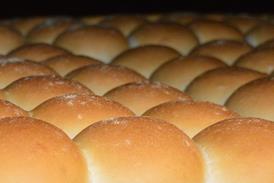

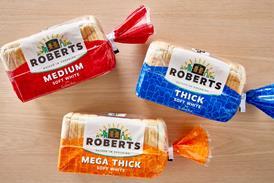

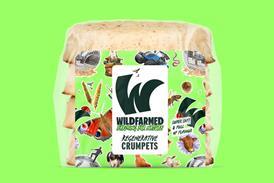

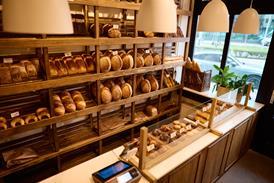




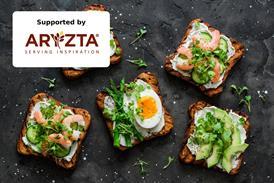


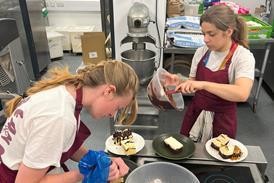










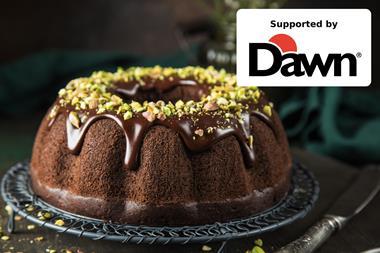
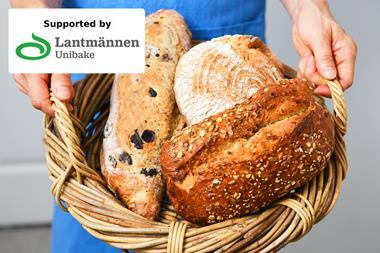


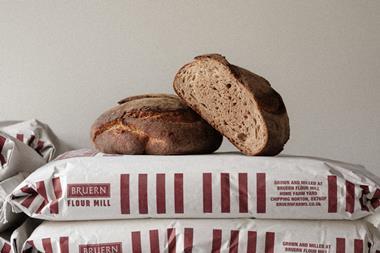


No comments yet